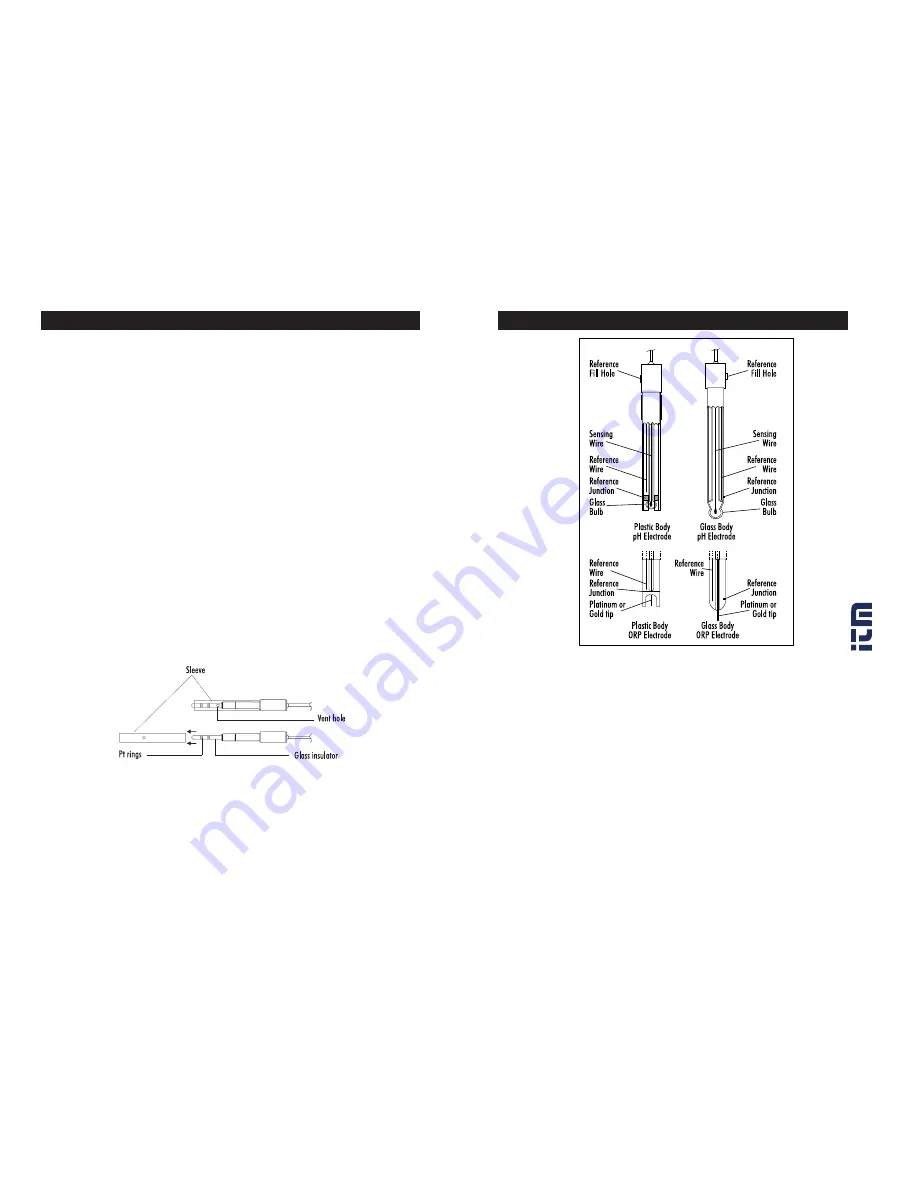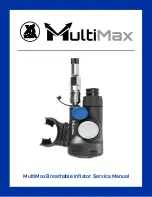
102
103
PREPARATION PROCEDURE
Remove the protective cap off the pH electrode.
SALT DEPOSITS MAY BE PRESENT. They will disappear when rinsed with water.
During transport, tiny bubbles of air may form inside the glass bulb, affecting proper functioning of the
electrode. These bubbles can be removed by “shaking down” the electrode as you would do with a glass
thermometer.
If the bulb and/or junction is dry, soak the electrode in
HI 70300
or
HI 80300
Storage Solution for at least one hour.
For refillable electrodes:
If the filling solution (electrolyte) is more than 2.5 cm (1”) below the fill hole, add
HI 7082
or
HI 8082
3.5M KCl Electrolyte Solution for double junction or
HI 7071
or
HI 8071
3.5M KCl+AgCl Electrolyte
Solution for single junction electrodes.
Unscrew the fill hole screw during measurements. This will allow electrolyte to flow out of the junction.
For Amphel electrodes if the electrode does not respond to pH changes, the battery may require replacement
(if replaceable).
ELECTRODE CONDITIONING AND MAINTENANCE
MEASURE
• Rinse conductivity probe with deionized water and shake off excess water.
• To avoid cross-contamination, rinse probe with a sample of solution to be tested. The measurement
solution is that contained within the sleeve.
• Insert probe into the center of the beaker with sample. Position it so it is away from the walls or bottom
of the beaker. The vent holes must be covered with solution.
• Tap the probe repeatedly to dislodge any air bubbles that may be trapped inside the sleeve. Allow time
for the reading to stabilize and reach thermal equilibrium.
• If you are adjusting the conductivity of the solution, stir the solution, then raise and lower the probe to
ensure representative sample is measured within the sleeve of the probe.
• If required, wait for the probe to reach thermal equilibrum with the sample.
PERIODIC MAINTENANCE
Inspect the probe and the cable. The cable used for connection to the instrument must be intact and there must
be no points of broken insulation on the cable. Connectors must be perfectly clean and dry. Rinse off any salt
deposits with water.
If more cleaning is required, remove the probe sleeve and clean the probe with a cloth or a nonabrasive
detergent. Make sure to reinsert the sleeve onto the probe properly and in the right direction. After cleaning
the probe, recalibrate the instrument.
The 4 platinum rings are precisely spaced along a glass insulator. Take great care while handling the probe.
IMPORTANT:
After performing any of the cleaning procedures, rinse the electrode thoroughly with distilled
water.
EC PROBE USE AND MAINTENANCE
w
w
w
.
.c
om
in
fo
rm
at
io
n@
itm
.c
om
1.
80
0.
56
1.
81
87







































